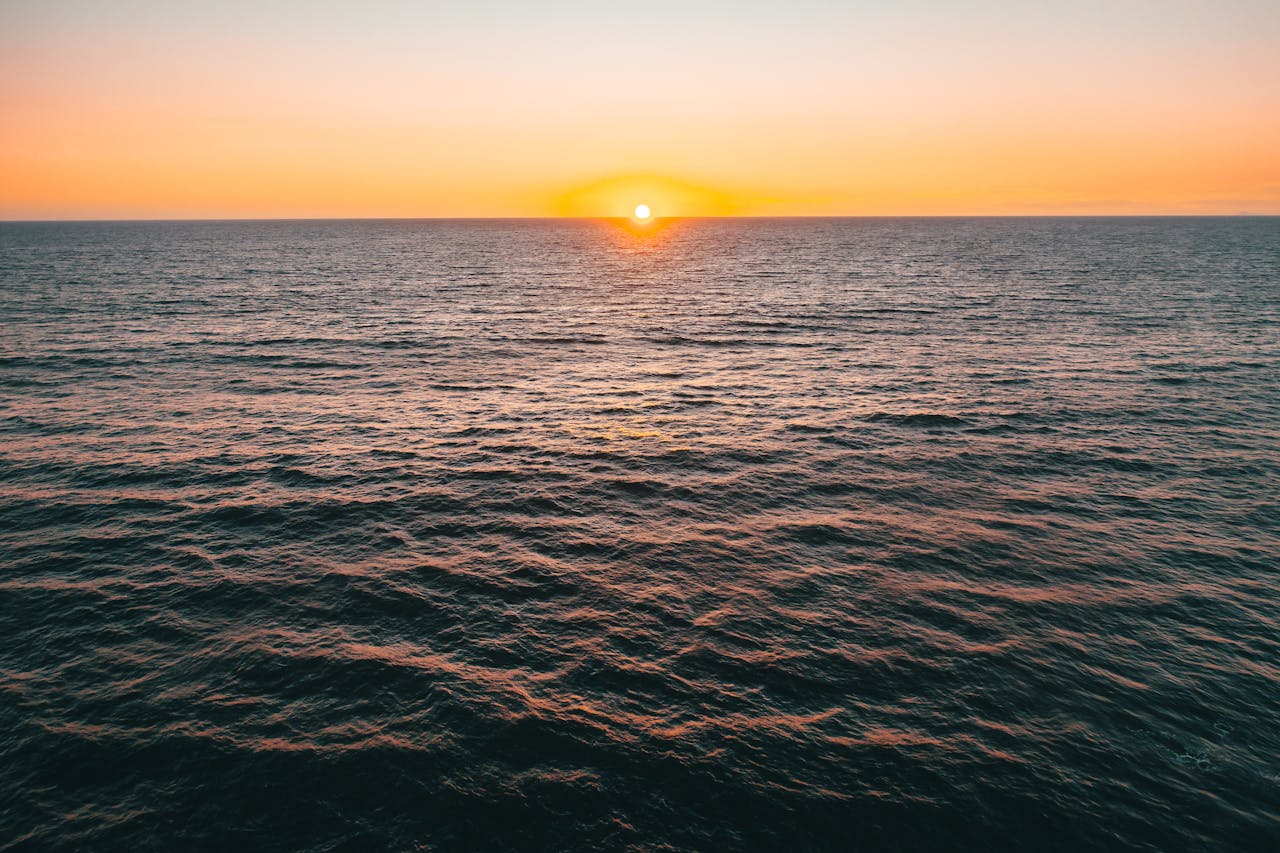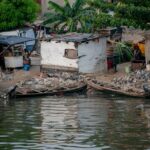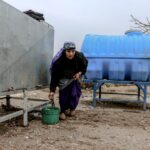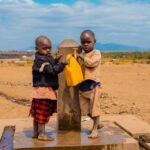Water Diplomacy: A Tool for Peace and Security

“Water is life’s matter and matrix, mother and medium. There is no life without water.” – Albert Szent-Györgyi.
Water is at the heart of survival, but it is also a source of power, growth, and, sometimes, tension. Countries that share water sources must work together to ensure fair access. When managed well, water can be a bridge for peace. But when poorly handled, it can fuel conflicts.
This is where water diplomacy comes in. It helps countries, communities, and organizations find ways to share and protect water resources fairly. With growing water shortages, rising populations, and climate change, the role of water diplomacy has never been more important.
Understanding Water Diplomacy
Water diplomacy is about solving problems related to shared water resources through cooperation and dialogue. Many countries rely on rivers, lakes, and groundwater that cross borders. Without clear agreements, disputes can arise over how water is used, who gets how much, and what happens when there is less water available.
Diplomacy helps create fair rules for water-sharing. Governments, international bodies, and local communities work together to manage water supplies without causing harm to one another. This involves signing agreements, setting up organizations to oversee water use, and using science to make fair decisions.
For example, the Mekong River Commission helps countries in Southeast Asia work together on water use, while the United Nations plays a role in resolving water disputes globally.
The Link Between Water and Conflict
Water shortages and poor management can turn water into a source of conflict. When a river or lake is shared by two or more countries, disagreements can arise over how much water each country should get. This is especially true in areas where water is already scarce.
For instance, in the Middle East and North Africa, where freshwater is limited, disputes over access to rivers and underground water sources have caused tension. The Nile River, which flows through several countries in Africa, has been a source of disagreements for years, with countries arguing over water rights.
Climate change is making things worse by reducing rainfall and increasing droughts, which puts even more pressure on shared water sources. If not handled well, water conflicts can lead to economic struggles, displacement of people, and even violence.
Key Players in Water Diplomacy
Solving water-related challenges requires teamwork. Several groups play a key role in water diplomacy:
• Governments: They create policies and sign agreements on how water should be shared and used. They also invest in water infrastructure to ensure long-term sustainability.
• International Organizations: Groups like the United Nations, the World Bank, and the African Union help countries resolve water conflicts by providing funding, research, and platforms for negotiation.
• Non-Governmental Organizations (NGOs): NGOs work with communities to improve water management, raise awareness, and push for fair policies. Organizations like the International Water Management Institute (IWMI) provide research and solutions to water challenges.
• Local Communities and Indigenous Groups: Those living near water sources often have traditional knowledge of managing them. Including them in decision-making ensures more practical and sustainable solutions.
• Private Sector: Companies that rely on water for production, like agriculture and energy industries, also have a role to play in water conservation and responsible use.
Each of these groups must collaborate to ensure that water resources are managed fairly and sustainably.
Real-Life Examples in Water Diplomacy
Water diplomacy has played a major role in preventing conflicts and ensuring fair access to water across regions. Here are some real-life examples that show how cooperation can turn water from a potential source of conflict into a tool for peace:
1. The Indus Waters Treaty (1960) – India and Pakistan
The Indus Waters Treaty is often cited as one of the most successful water-sharing agreements in history. Brokered by the World Bank, it settled disputes between India and Pakistan over the use of the Indus River system. The treaty divided the river’s waters, giving control of the eastern rivers (Ravi, Beas, and Sutlej) to India and the western rivers (Indus, Jhelum, and Chenab) to Pakistan. Despite tensions and conflicts between the two nations, the treaty has remained in place for over six decades, proving that water cooperation can endure even in difficult political situations.
2. The Nile Basin Initiative (1999) – African Nations
The Nile River flows through 11 countries, making it a shared resource for millions of people. In the past, disagreements over water rights led to tensions between upstream and downstream nations. To address these concerns, the Nile Basin Initiative (NBI) was formed. It brought together countries like Egypt, Sudan, Ethiopia, and Uganda to promote dialogue, data sharing, and joint water management strategies. Although challenges remain, this initiative has helped reduce tensions and improve collaboration over one of the world’s most important rivers.
3. The Jordan River Cooperation – Israel, Jordan, and Palestine
The Jordan River is a critical water source for Israel, Jordan, and Palestine. Due to increasing water demand and climate challenges, tensions have arisen over water allocation. However, several cooperation efforts, including the Red Sea Dead Sea Water Conveyance Project and water-sharing agreements between Israel and Jordan, have helped ensure that water remains a shared resource. These initiatives have strengthened diplomatic ties and created opportunities for further cooperation in the region.
4. The Senegal River Basin Development – West Africa
Four countries – Mali, Mauritania, Senegal, and Guinea – share the Senegal River. Instead of competing for access, these nations established the Organisation pour la Mise en Valeur du fleuve Sénégal (OMVS), a cooperative body that manages the river for the benefit of all. This agreement allows them to develop hydropower, irrigation, and navigation while preventing conflicts over water. The OMVS is seen as a model for successful transboundary water management.
These examples show that when countries choose dialogue over conflict, water can become a tool for peace. Diplomacy and cooperation help ensure that rivers and lakes serve the needs of all people, regardless of borders.
The Role of International Organizations in Water Diplomacy
International organizations play a key role in helping countries cooperate on water issues. Groups like the United Nations (UN), World Bank, and International Water Management Institute (IWMI) provide technical support, funding, and conflict-resolution platforms for water-related disputes.
• United Nations Water (UN-Water): This agency helps coordinate global water policies and supports initiatives like the Sustainable Development Goal 6 (clean water and sanitation for all).
• World Bank Water Programs: The World Bank funds major water projects, especially in water-stressed regions. It also helps countries settle disputes, such as its involvement in the Indus Waters Treaty between India and Pakistan.
• International Water Management Institute (IWMI): This research institute provides data and policy recommendations to improve water use efficiency, particularly in agriculture.
These organizations help create peaceful solutions by offering research, legal advice, and financial support to water-stressed regions.
Challenges in Water Diplomacy
Even with international support and treaties, water diplomacy faces many challenges, including:
• Political Tensions: Disputes over water often happen in regions with existing conflicts. For example, the Jordan River Basin is shared by Israel, Jordan, Lebanon, Palestine, and Syria, all of whom have geopolitical tensions that affect water-sharing agreements.
• Climate Change: Rising temperatures and unpredictable rainfall make water availability more uncertain, putting more pressure on existing agreements. The Colorado River Compact (USA) is under strain because of ongoing droughts.
• Infrastructure and Funding Gaps: Many developing countries lack the necessary pipelines, reservoirs, and treatment plants to distribute water fairly. Without infrastructure, even the best water agreements cannot be fully implemented.
• Lack of Enforcement: Some treaties are signed but not followed through. For example, Ethiopia, Sudan, and Egypt continue to disagree on the operation of the Grand Ethiopian Renaissance Dam (GERD), despite ongoing diplomatic discussions.
Addressing these challenges requires continuous dialogue, strong legal frameworks, and the involvement of international organizations.
Innovative Approaches to Water Diplomacy
To overcome challenges, countries are adopting new strategies in water diplomacy, such as:
• Technology for Transparency: Tools like satellite imaging and real-time water monitoring help countries track shared water sources accurately, reducing disputes. The European Space Agency (ESA) provides satellite data to monitor water levels globally.
• Joint River Basin Management: Instead of dividing water into fixed portions, some agreements focus on co-managing entire river basins. The Danube River Commission (covering 19 countries in Europe) uses this approach to protect the river’s health while ensuring fair usage.
• Economic Incentives: Some countries pay their neighbors to ensure sustainable water use. For example, Singapore buys water from Malaysia, while investing in its own desalination plants to reduce dependence over time.
• Citizen Involvement: In some places, local communities help manage water resources.
These new methods show that water diplomacy is evolving beyond traditional treaties to include science, economics, and community participation.
Water Security and National Stability
Water security is closely linked to a country’s overall stability. When people lack access to clean water, it can lead to economic struggles, political unrest, and even conflict. Governments that fail to provide reliable water sources often face social pressure, protests, or even displacement of populations.
• Economic Impact: Industries, agriculture, and cities all rely on water. When supplies are disrupted, businesses shut down, food production drops, and the economy weakens.
• Public Health Risks: Without proper water management, waterborne diseases like cholera and typhoid can spread, overwhelming healthcare systems.
• Migration and Conflict: Water shortages force people to leave their homes in search of better conditions. The Lake Chad Basin crisis in Africa has displaced millions as the lake shrinks due to climate change and overuse.
Water Conflicts: When Diplomacy Fails
When countries or communities fail to cooperate on water, tensions can escalate into full-blown conflicts. Some of the world’s most fragile regions have seen disputes over rivers, lakes, and underground water sources.
• The Nile River Dispute: Egypt, Sudan, and Ethiopia have long disagreed over Ethiopia’s Grand Renaissance Dam on the Nile. Egypt fears reduced water flow, while Ethiopia sees the dam as essential for development.
• The India-Pakistan Water Dispute: Even though the Indus Waters Treaty (1960) has helped manage water sharing, occasional disputes arise over dam projects. Political tensions between the two nations make negotiations difficult.
• Water Scarcity in the Middle East: Countries like Jordan, Israel, and Palestine rely on the Jordan River, but reduced water levels and climate change have made access even more contentious.
These conflicts highlight the urgency of water diplomacy, where clear agreements, fair resource distribution, and regional cooperation are essential for preventing crises.
The Future of Water Diplomacy
As water becomes an even more critical resource, the ways nations handle water diplomacy will shape global stability. Several trends are emerging:
• Climate Adaptation Strategies: More countries are investing in climate resilience, like water-saving irrigation, desalination, and advanced water recycling to reduce dependency on shared water bodies.
• Regional Water Hubs: Some regions are creating water-sharing alliances to manage resources more effectively. The Southern African Development Community (SADC) has been working on joint water management strategies.
• Technology-Driven Solutions: AI and data analysis are being used to predict water shortages and prevent disputes. Projects like the NASA GRACE satellites monitor groundwater levels worldwide.
• Private Sector Involvement: More businesses are stepping in to support water security, funding desalination plants, wastewater treatment projects, and conservation efforts.
The future of water diplomacy depends on collaboration, innovation, and responsible governance to ensure that this vital resource is shared fairly and sustainably.
Conclusion
Water is more than just a basic necessity – it is a powerful force that shapes economies, societies, and international relations. As demand for fresh water increases due to population growth, industrial expansion, and climate change, the need for effective water diplomacy has never been greater.
Throughout history, nations have both cooperated and clashed over water. From the successful Indus Waters Treaty between India and Pakistan to ongoing tensions over the Nile and Jordan Rivers, the way water is managed can determine whether regions experience peace or conflict. Strong governance, fair policies, and open communication are crucial in preventing disputes and ensuring that water remains a tool for unity rather than division.
The future of water diplomacy lies in innovation and collaboration. With advancements in technology, better climate adaptation strategies, and regional partnerships, countries can build a framework for sustainable water management. Organizations like the United Nations, the World Bank, and NGOs like Aqua Maya continue to play a key role in helping communities access clean and reliable water sources.
In a world where water scarcity is becoming a pressing issue, diplomacy is not just an option – it is a necessity. By working together, nations can turn potential conflicts into opportunities for cooperation, ensuring that water remains a shared resource for all.
Sources
4. https://www.fao.org/in-action/right-to-food-global/regional-level/sadc/ar/
5. https://www.earthdata.nasa.gov/data/instruments/grace






